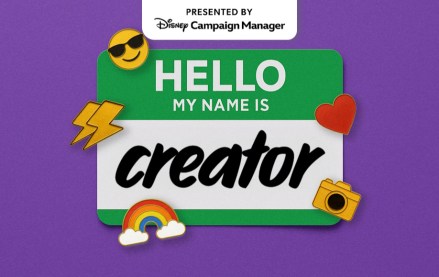Join us Oct. 15-17 in Phoenix to connect with top media buyers

Publishers launch paywalls with the primary goal of getting more revenue from consumers. But the consumer information they’re gathering through the registration process also has potential value to advertisers.
In theory, that data could be used to enable advertisers to pinpoint a select audience that is core, affluent users of the publishers’ site. That’s one of the ideas behind Time Inc.’s new paid-content strategy. As publishers give up some traffic associated with putting up a paywall, it’s attractive to think they could make up for the loss by charging higher CPMs for their registered users.
“Knowing an audience is highly representative of a publisher because of the regularity of their content consumption can be very attractive to a brand, especially as they try to tailor messages to cultural moments or themes exactly when an audience is consuming it,” said Alan Smith, chief digital officer at Assembly. “This type of audience data can come with a premium and is one that some brands will pay for.”
Still, primarily due to scale, that seems to be more the exception than the rule. Advertisers can now get user-registration data from Google and Facebook, which have the volume individual publishers lack, Smith said.
Rarely are publishers able to charge higher CPMs for user-registration data, said Steve Goldberg, managing director at Empirical Media. “For almost all publishers, the best they can do is use it as a filter in addition to — versus as a replacement for — third-party data,” he said. “One of the challenges is that paywall subscribers tend to be a small fraction of the overall audience, and that can lead to delivery issues, especially in shorter flights.”
And some advertisers are focused on other criteria. Numbers-oriented media buyers will push back against the idea that paying readers are worth more than freeloaders. Convincing advertisers that their first-party data is more valuable than a look-alike audience is a challenge, admitted Brendan Spain, The Financial Times’ U.S. commercial director. “It’s the constant explanation of quality versus quantity,” he said.
The FT is working around the scale challenge through subscriptions, which are core to the its model. Over the past decade, the publisher has been able to fine-tune its use of the data. The FT asks registered users to provide their industry, role and job title.
About 75 percent of the FT’s advertising is targeted based on that audience data, and the FT charges advertisers 20-50 percent more to reach people who identify themselves as C-suite executives, financial advisers and other select, high-value categories than those who fall into the FT’s second-tier audience, which includes mid-level managers or students, said Spain.
But even for the FT, scale is a constraint to selling this way. To address this issue, a few weeks ago, it introduced a product called FT Audience Plus that lets advertisers target that C-suite executive audience when they visit other sites.
Another publisher, The Washington Post, used to have user registration as the basis of its audience targeting. But the Post has replaced that with interest profiles it developed in house, for which it charges a premium, said Jed Hartman, chief revenue officer at the Post. “This gives us greater scale than registration data,” he said. “And importantly, it allows us to target based on intent.”
More in Media

Mitigating ‘Google risk’: The Independent maps four-pillar growth plan for the AI era
The Independent has built its growth strategy around the “blue links risk” and has stopped measuring its success by audience reach.

Advertising Week Briefing: Creators emerge as the industry’s new power brokers
Advertising Week has had creator-focused content tracks in past years, but the rising presence of content creators at this year’s event represents an evolution in how creators are engaging with advertisers, both at industry conferences like Advertising Week and in general.

From walls to frameworks: Publishers and tech giants push weekly talks on AI content use
More than 70 companies gathered for the workshop, roughly half of whom were publishers – a handful from Europe.





